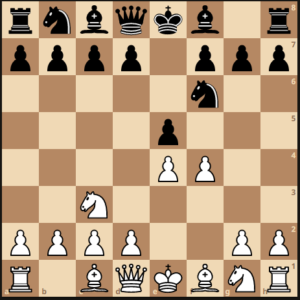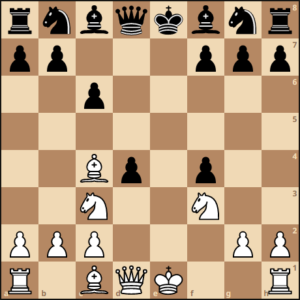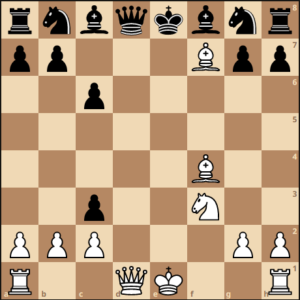The game of Chess has been studied meticulously for years (and possibly solved with computers), yet this never takes away from the beauty of the game when your opponent plays such an absurd move it makes you double-take. Playing the game is as much mental warfare as it is pieces on the board tearing each other apart, and sometimes it is advantageous not to play the best-scoring move in terms of material and be compensated in another way. This concept is well-known to skilled chess players and can be realized in the form of sacrifices, stalling moves or intentional weakening. We will study a famous gambit that is objectively bad with correct play and the compensation that a player might receive when playing them. We will then continue with tie ideas of Nash Equilibrium and Dominant Strategies in the “Berlin Defense”.
We will first discuss the Vienna Gambit, which starts from this position:

Where white plays f4, sacrificing the poison pawn. The average person playing with black will take the free pawn and think they are immediately better, and thus the mental warfare begins. The game continues with e5xf4, f5 trapping the knight (best response) and forcing it back to its home square. At this point the person playing with black will feel frustrated about under-developing a piece. As they try to break out, we may approach this position:

Where the person with black is threatening to capture the white knight on c3. The objectively “best response” for white here is to recapture on e4 with either the knight or the queen, winning back the pawn and having a development lead, but the mental move for white is to sacrifice the knight – disregarding this threat entirely and capture the pawn on f4 with the dark-squared bishop. Once black replies by taking the “free knight”, the game is lost with bxf2.

If kxf2, the queen is lost, the only other move is ke2 which leads to forced checkmate in 5-7 moves.
We discussed best responses to threats that are played in this game, but other game theory concepts are also prevalent in other lines. We have a Nash Equilibrium in the famous Berlin Defense, where both players can force a draw if they are seeking one. This line is played whenever the person playing black is trying to force a draw, thus choosing this line it itself is a dominant strategy if you know the opening move of the other player. We also discuss the idea of a dominant strategy in the game itself as it progresses, as seeking a draw may have a better payoff than playing for a win in the Berlin Endgame.
References:
(Illingworth), Max Illingworth. “Dangerous Chess Openings: The Vienna Gambit.” Chess.com, https://www.chess.com/blog/Illingworth/dangerous-chess-openings-the-vienna-gambit-1.
“Berlin Defence (Chess).” Wikipedia, Wikimedia Foundation, 4 Sept. 2022, https://en.wikipedia.org/wiki/Berlin_Defence_(chess).